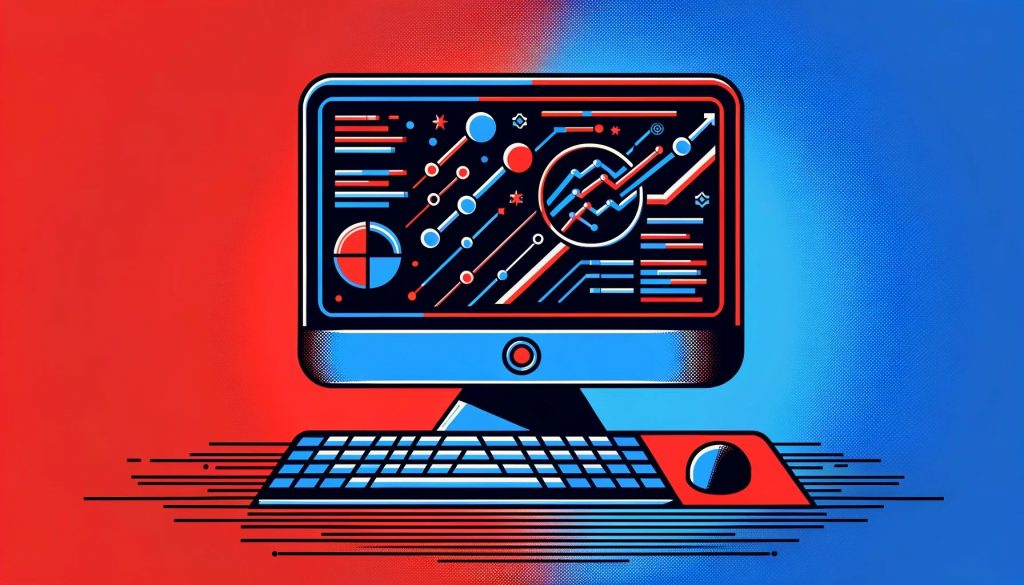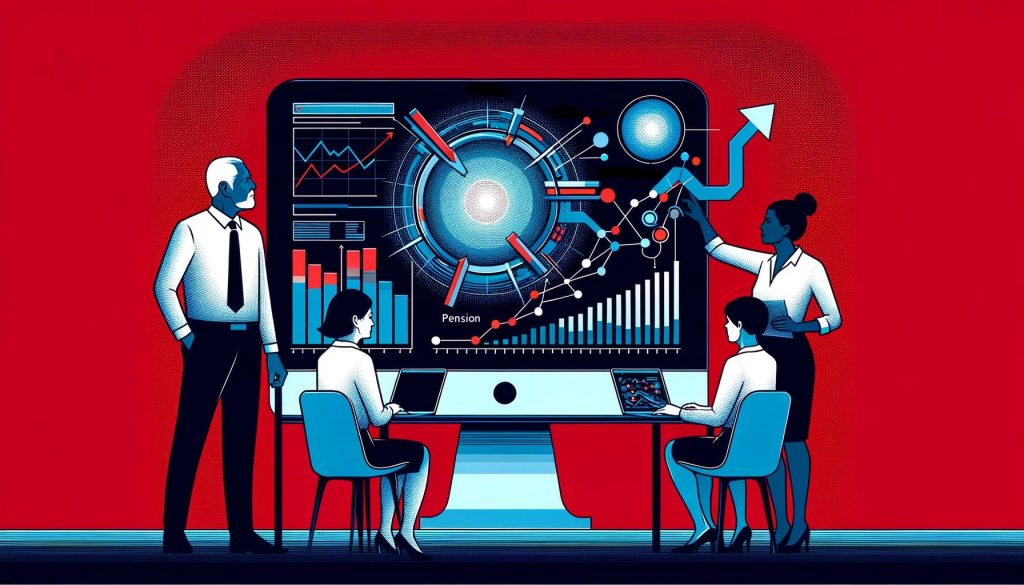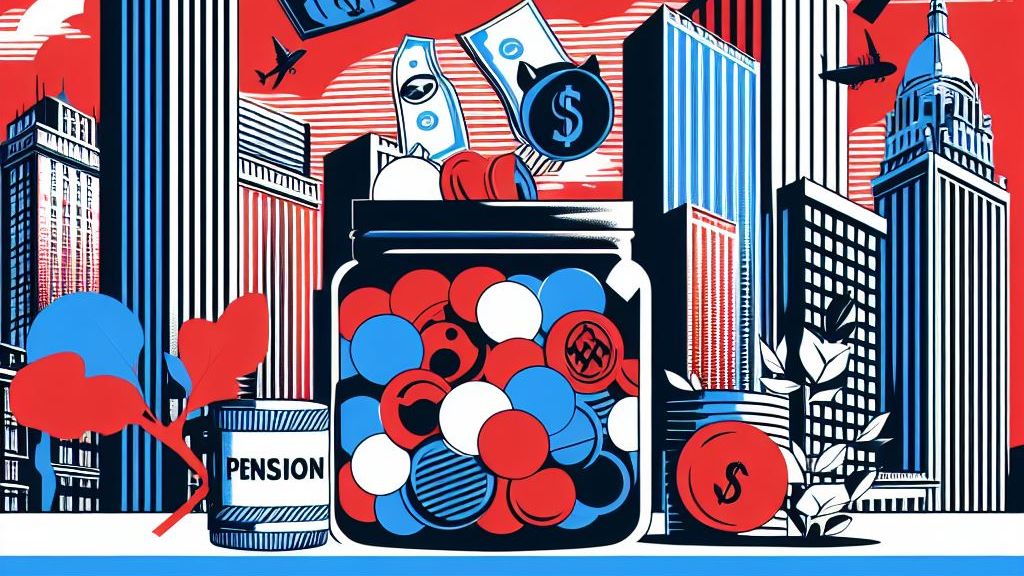Towards the end of the 20th century, a quiet crisis was unfolding in corporate America.
Major organizations like General Motors, a colossus in its prime, grappled with a promise made in simpler times: secure pensions for its workers.
As workers walked through the once-hallowed halls, they saw concern etched on the faces of executives. The problem was clear – the pension promise was becoming a financial albatross. The pension plans, once the cornerstone of employee trust, were now ticking time bombs of financial risk.
Retirees were living longer, and the funds set aside were trembling under the weight of this unforeseen longevity.
In boardrooms filled with cigarette smoke and furrowed brows, the need for a solution was palpable. It was here, amid this brewing storm, that the concept of Pension Risk Transfer appeared.
Not as a retreat, but as a strategic pivot—a way to honor commitments while securing the company’s future.
The Origins of Pension Risk Transfer

In the latter half of the 20th century, as industrial giants like General Motors and other titans faced their pension predicaments, the landscape of corporate responsibility began its subtle yet seismic shift.
Pensions, in their earliest forms, were simple promises—a commitment to care for workers after years of service. These promises, often informal and based on goodwill, evolved into more structured plans as industries grew and labor movements gained momentum.
The post-World War II era saw a boom in these defined benefit plans, with companies proudly offering them as a testament to their strength and stability. It was a mutually beneficial pact: workers were assured a comfortable retirement, and companies cultivated a loyal workforce.
However, this comfort was predicated on certain assumptions about life expectancy and economic stability—assumptions that would soon be challenged.
The financial markets in the 1970s and 1980s experienced significant volatility, characterized by several key events and trends that had a profound impact on pensions and corporate financial planning. Here are some of the notable instances:
- 1970s Oil Crisis: The decade began with the 1973 oil crisis, triggered by an embargo by the Organization of Arab Petroleum Exporting Countries (OAPEC) against the United States and other countries. This led to skyrocketing oil prices and severe inflation, deeply affecting global economies, and causing stock market downturns.
- Stagflation: The 1970s were marked by ‘stagflation,’ a combination of stagnant economic growth and high inflation. This period challenged the conventional economic theories of the time and impacted investment returns. The primary reason was the high inflation eroding the real value of fixed-income investments, which were a significant part of pension fund portfolios.
- Interest Rate Volatility: The late 1970s and early 1980s saw extremely high interest rates, partly due to the policies of the U.S. Federal Reserve under Chairman Paul Volcker, who raised rates to combat inflation. This caused bond prices to fluctuate significantly and affected the valuation of pension liabilities.

- Stock Market Fluctuations: The stock markets also experienced considerable fluctuations during this period. Notably, the 1987 stock market crash (Black Monday) saw global stock markets lose a significant value in a very short period. Such market crashes affected the asset side of pension fund balance sheets, creating funding challenges.
- Regulatory Changes: In response to the financial challenges of the era, several regulatory changes were implemented, such as the Employee Retirement Income Security Act (ERISA) of 1974 in the United States. ERISA established minimum standards for pension plans in private industry and aimed to protect individuals in these plans, but it also added complexity and cost to pension management.
While necessary for protecting retirees, these regulations added an additional layer of complexity and cost for companies. The cost of providing lifelong pensions started to balloon, catching many companies off guard. It incentivized them to seek alternatives to managing their pension obligations.
Insurance companies, with their expertise in managing long-term risks, became natural partners in this process.
Thus, the seeds of PRT (Pension Risk Transfer) were sown, through a gradual awakening to the realities of a changing world.
The Technological Evolution of Pension Risk Strategies

The digital revolution profoundly influenced PRT practices. This shift was not just about faster computers but about applying technology to rethink PRT strategies.
However, technology brought new challenges.
- Late 1980s to 1990s: The emergence of computer viruses and worms, like the Morris Worm of 1988, highlighted the vulnerabilities of digital systems. Although not directly targeting pension funds, these early forms of cyber threats underscored the need for robust digital security across all sectors, including finance and pension management.
- Late 1990s to Early 2000s: With the widespread adoption of the internet, there was a notable increase in online fraud and scams. These included phishing attacks, which could potentially target employees managing pension funds, exposing sensitive data to unauthorized access.
- Early 2000s: The early 2000s saw a rise in more sophisticated cyberattacks like SQL injection, which targeted databases. Such attacks posed a risk to pension funds that increasingly relied on digital databases for managing member information and financial data.
- Mid-2000s: High-profile hacks in the financial sector, such as the breach at TJX Companies in 2005, where hackers stole the credit card information of millions of customers, raised awareness about the need for enhanced cybersecurity in all areas of finance.
- DDoS Attacks on Financial Institutions (Late 2000s): Distributed Denial of Service (DDoS) attacks, which became more common in the late 2000s, often targeted financial institutions, disrupting services.
On the other hand, the technological revolution offered tools to manage pension risks more effectively, adapt to market changes rapidly, and plan for future uncertainties with greater confidence.

Computers have transformed the way we handle pension calculations. Actuarial models, crucial for predicting pension liabilities, shifted from manual to automated, increasing accuracy and efficiency. This meant faster and more reliable forecasts for life expectancy, market changes, and investment returns, crucial for pension planning.
Software advancements played a key role. New tools emerged for deeper risk analysis. For instance, Monte Carlo simulations became a standard technique, using randomness to model market uncertainties and help predict various outcomes for pension funds. This approach provided a more comprehensive understanding of potential risks and returns, essential for managing PRT.
Data analytics also became a cornerstone of PRT. With the surge in data availability and processing power, pension managers could analyze vast datasets to find trends and make informed decisions. This included tracking demographic changes, investment performance, and regulatory updates in real-time.
The rise of digital connectivity had a significant impact. Information exchange became faster, allowing for quicker responses to market shifts. Online platforms enabled more efficient communication between pension managers and insurers, streamlining the process of negotiating and executing PRT transactions.
Case Studies: PRT in Action

In the PRT universe, several pioneering cases stand out, offering both insights and cautionary tales.
General Motors’ PRT Deal, 2012
In June 2012, General Motors made a groundbreaking move in the PRT market. They announced a pension buyout plan for 110,000 salaried retirees, transferring $25.1 billion in pension liabilities to Prudential Insurance. This was one of the largest pension risk transfers in history. GM’s decision was driven by the desire to de-risk its pension plan and reduce the volatility in its corporate balance sheet. This transaction was a significant case study in managing corporate pension risks and highlighted the scale at which PRT could be implemented.
Verizon’s Pension Risk Transfer, 2012
Following GM’s footsteps, Verizon Communications Inc. announced in October 2012 a pension plan. This transfer involved 41,000 management retirees, moving $7.5 billion in pension plan liabilities to Prudential. This deal emphasized the trend of large corporations offloading their pension obligations to insurance companies to stabilize their financials and focus more on their core business operations.
British Airways’ Multi-Phased Approach, 2018
British Airways adopted a different strategy in 2018 when they executed a £4.4 billion buy-in with Legal & General, covering nearly 22,000 pensioners in their Airways Pension Scheme (APS). This was part of a multi-phased approach to eventually buy out the scheme. This approach allowed British Airways to manage risk incrementally and provided a blueprint for other companies considering a phased PRT approach.
The Challenges Faced by Sears, 2018
Sears Holdings Corporation faced challenges with its pension plans amidst its financial struggles. Sears’ pension obligations were a significant factor in its bankruptcy.
Lessons and Insights
These case studies provide valuable lessons for corporations considering PRT:
- Scale and Impact: Large corporations can execute PRT at a massive scale, significantly impacting their financial health and risk profile.
- Market Conditions: The timing of these transactions, often influenced by market conditions, can greatly affect the terms and success of the deal.
- Phased Approach: A gradual approach, as seen in British Airways’ case, can offer a more manageable pathway to complete pension risk transfer.
- Risk of Delay: Delaying PRT, especially in financially unstable situations like Sears, can lead to exacerbated risks and complications.
The Growth and Expansion of PRT

PRT has seen significant growth and expansion. Not just in the scale of operations, but also in its global reach and diversity of solutions.
Initially concentrated in the UK and the US, PRT has now become a global phenomenon.
European countries like the Netherlands and Germany have seen increased PRT activity, influenced partly by regulatory changes and the recognition of the benefits of de-risking pension liabilities.
In Asia, markets such as Japan and South Korea are gradually embracing PRT practices. Albeit at a slower pace, due to different pension system structures and regulatory environments.
The realm of PRT solutions has evolved beyond traditional buy-ins and buy-outs.
Buy-ins: An insurance company takes on the pension payment responsibility while the plan remains intact.
Buy-outs: The pension plan is entirely transferred to an insurer.
These old-school systems have been joined by more nuanced solutions. These include:
Longevity swaps: Pension plans hedge the risk of pensioners living longer than expected.
Partial risk transfers: Offering flexibility to pension funds not ready for a full buy-out.
Insurance companies have increasingly become central to the PRT market.
They’re not just end-point buyers of pension liabilities but also advisors and managers of pension risk. Companies like Prudential, Legal & General, and MetLife are prominent players in this space, offering a range of PRT solutions.
Additionally, investment banks and specialized financial advisors have become integral. They provide expertise in structuring deals, managing regulatory compliance, and optimizing financial outcomes for both pension funds and insurance companies.
The Impact of Economic and Demographic Changes

When interest rates are low, the cost of future pensions rises. This pushes companies towards PRT to limit risk. High-interest rates make PRT appealing to insurers due to better investment returns.
Market volatility also sways PRT decisions. In unstable economies, companies often transfer pension liabilities to insurers for financial stability.
The aging population is a major factor. Longer life spans increase pension costs, leading to more PRT adoption. This transfers the risk of longer retiree lifespans to insurers. Workforce changes, like fewer workers supporting more retirees, also affect pension funds. PRT can help manage this imbalance by ensuring retirees’ pensions.
Modern Developments and Innovations in PRT

The PRT landscape is rapidly evolving, driven by advancements in technology and global events.
AI and data analytics are revolutionizing PRT. AI tools analyze vast datasets, uncovering trends, and risk factors previously unnoticed. This leads to more exact risk assessments and pricing.
Predictive analytics models help in predicting long-term pension liabilities and market shifts.
A rising trend is the increased use of bespoke PRT solutions. These are tailored to the specific needs and risks of pension schemes, providing more flexibility and efficiency.
Also notable is the integration of ESG (Environmental, Social, and Governance) factors into PRT decision-making. This reflects a growing awareness of the impact of investments on broader societal issues.
Recent global events, such as the COVID-19 pandemic, have had a profound impact on PRT. The pandemic highlighted the need for robust risk management and the importance of pension security in uncertain times. It also accelerated the adoption of digital tools in PRT transactions.
Geopolitical tensions and economic upheavals have further emphasized the need for agile and responsive PRT strategies.
The Future of Pension Risk Transfer

The landscape of PRT is evolving rapidly, with several key trends and challenges shaping its future:
- Technological Integration: A major shift towards the use of advanced technologies like AI, machine learning, and blockchain is predicted. These technologies will streamline PRT processes and enhance risk assessment accuracy.
- Customized Solutions: There’s a growing trend towards creating more personalized PRT solutions tailored to individual company needs, reflecting their specific risk profiles and financial strategies.
- Regulatory Changes: Keeping pace with evolving global financial regulations remains a significant challenge, requiring continuous adaptation of PRT strategies.
- Economic Uncertainty: The unpredictable nature of global economies presents both a challenge and an opportunity for PRT, driving the need for more resilient and flexible pension risk strategies.
- Enhanced Security for Retirees: With the advancement of PRT mechanisms, retirees can look forward to more secure and predictable retirement benefits.
- Integration with Corporate Strategy: PRT is becoming a crucial part of broader corporate financial strategies, helping companies to balance growth goals with risk management.
Conclusion
Pension Risk Transfer began somewhat simply and grew complicated. Technology, economics, and demographics – all have changed it. As we speak, the landscape of retirement and corporate finance is changing.
The field is set to become more integral in ensuring financial stability for both companies and retirees. Embracing technological advancements, expecting challenges, and seizing emerging opportunities will shape the next era of pension risk transfer.
The path ahead is uncharted, but the past gives us clues. PRT is important. It’s about more than money. It’s about people’s futures.



